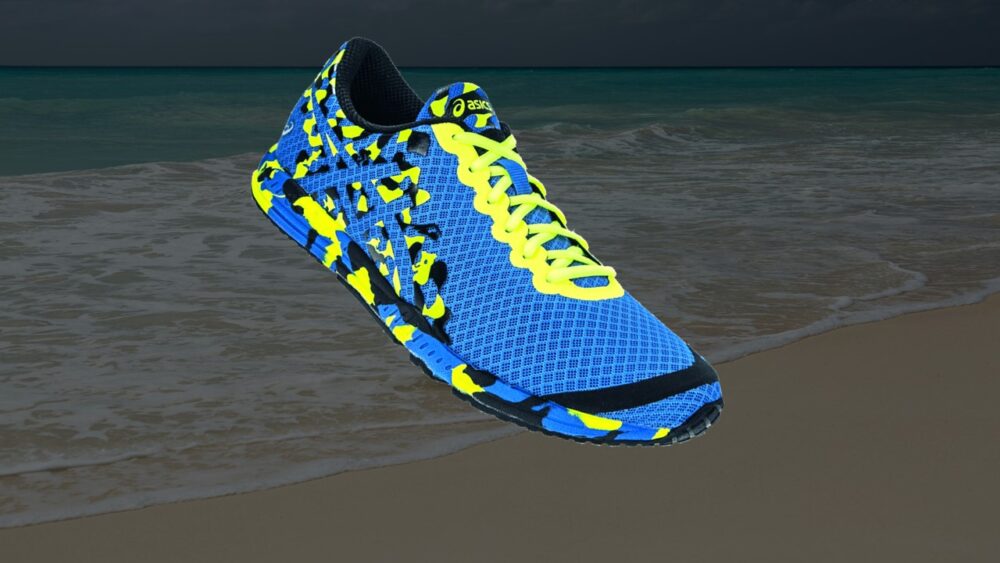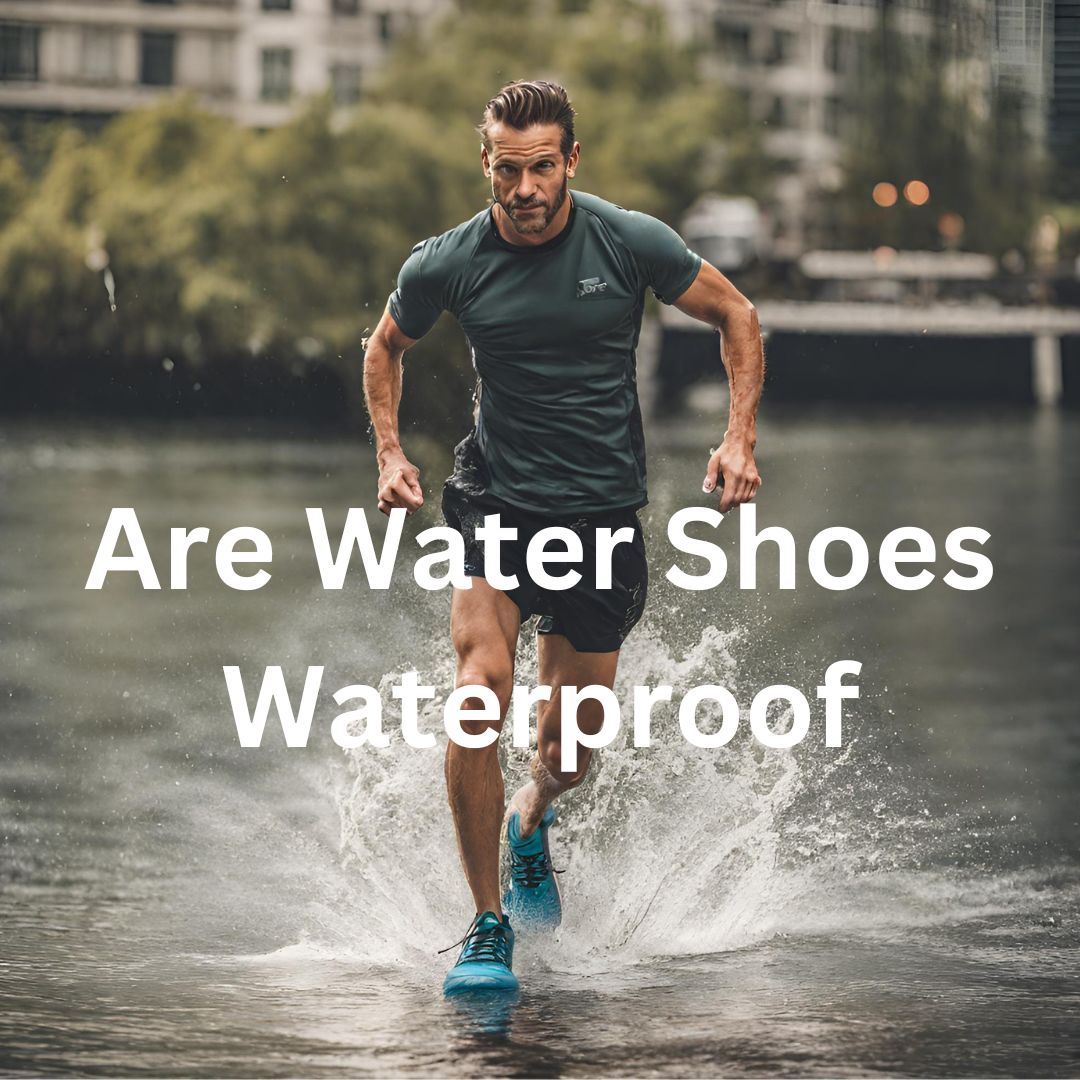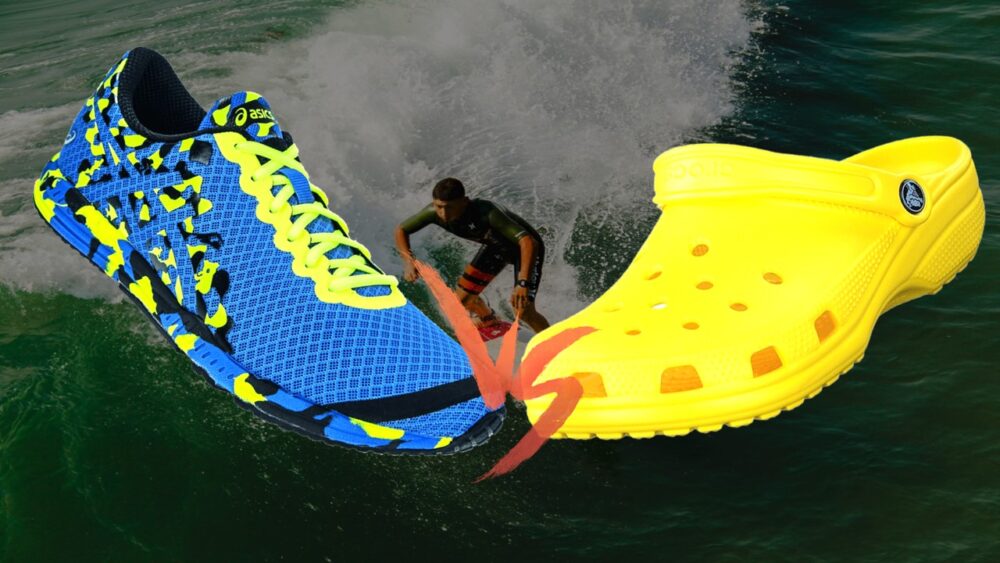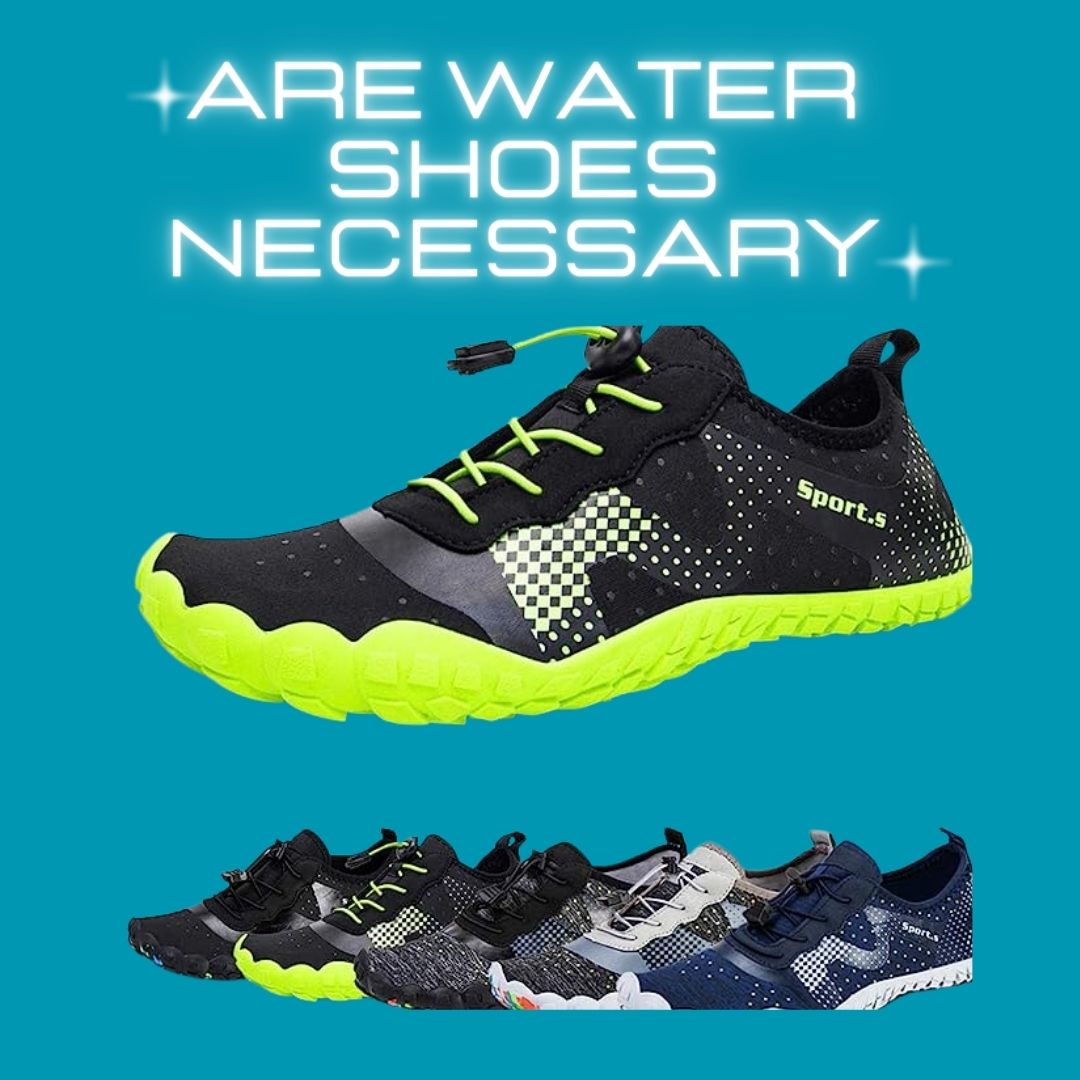Can Water Shoes Be Used For Walking – 10 Best Water Shoes For Walking
Can water shoes be used for walking? Yes, water shoes can be used for short-distance walking. They are designed to be comfortable and durable, even when wet. Water shoes also have good traction on a variety of surfaces, making them ideal for walking even on slippery rocks, sand, and pavement.
However, not all water shoes are created equal. Some water shoes are designed specifically for activities such as swimming and snorkeling, while others are better suited for walking and other land-based activities.
In this article, we’ll delve deeper into the world of water shoes and their suitability for walking. We’ll explore the key features that make water shoes ideal for various terrains and provide tips on selecting the right pair to meet your specific needs. You’ll also find recommendations, user testimonials, and valuable insights on maintenance and care.
Can Water Shoes Be Used For Walking
Water shoes can be used for walking and are particularly well-suited for short-distance walks. These versatile footwear options offer a combination of comfort, quick-drying materials, and lightweight design, making them an excellent choice for leisurely strolls, beach walks, or casual hikes.
While they may not be the best option for long-distance or intensive walking, water shoes are perfect for those occasions when you need comfortable, breathable, and versatile footwear for short excursions.
RELATED: Valentine Day At The Beach – Make Your Valentine’s Day Special
Here’s why water shoes are suitable for walking:
- Comfort and Arch Support: Water shoes are designed with comfort in mind. Many of them come with well-cushioned insoles and arch support, making them comfortable for walking. These features help reduce foot fatigue and provide adequate support during short-distance walks.
- Lightweight Design: Water shoes are typically lightweight, which is an advantage for walking. Their minimalistic design allows for easy movement and reduces the strain on your legs and feet, making them ideal for short walks, beach outings, or casual hikes.
- Quick-Drying Materials: Water shoes are crafted from materials that dry quickly. This is beneficial if you encounter wet or damp conditions during your walk. Wet shoes can be uncomfortable and lead to blisters, but water shoes are designed to handle moisture, allowing you to continue walking comfortably.
- Breathability: Water shoes often feature breathable mesh or perforated materials that help keep your feet cool and dry. This feature is especially useful for walking in warm weather or when you’re likely to sweat.
- Traction: Many water shoes have non-slip soles with good traction. This is essential for ensuring stability and safety while walking on various surfaces, including wet or slippery ones.
- Versatility: Water shoes are not just limited to water use. They have evolved to be versatile footwear that can be used on both wet and dry land. You can transition seamlessly from water activities to walking on the beach, exploring rocky terrain, or even light hiking.
- Drying Time: After walking in wet conditions, water shoes will dry relatively quickly, which is convenient if you need to wear them again soon.
- Easy Maintenance: Water shoes are generally easy to clean and maintain, ensuring their longevity and functionality for your walks.
It’s important to note that while water shoes are suitable for short-distance walking and casual outings, they may not be the best choice for intensive or long-distance hikes or activities that require specialized footwear.
In such cases, hiking shoes or athletic shoes with specific features may be more appropriate. Therefore, the choice of using water shoes for walking depends on your specific needs and the nature of the walking activity.
RELATED: Should You Wear Water Shoes In The Ocean?
The Best Water Shoes For Walking (Can Water Shoes Be Used For Walking)
Discover Your Perfect Stride with the Best Water Shoes for Walking! When it comes to your active outdoor adventures, the right footwear can make all the difference. We’ve handpicked top-notch water shoes that strike the perfect balance between comfort, support, and versatility for your walks.
Whether you’re headed to the beach, exploring a picturesque trail, or simply enjoying a leisurely stroll, our selection of the best water shoes will ensure your feet are ready to take on any terrain. Here are the best water shoes for walking:
Product Image | Product Name | Key Features | Rating | Price |
| ||||
| ||||
| ||||
| ||||
| ||||
| ||||
| ||||
| ||||
| ||||
|
Pros And Cons Of Wearing Water Shoes For Walking (Can Water Shoes Be Used For Walking)
| Pros Of Wearing Water Shoes For Walking | Cons Of Wearing Water Shoes For Walking |
| Comfortable and cushioned insoles provide support for short walks. | Not ideal for long-distance walking or intense hikes. |
| Lightweight and easy to move in, reducing leg and foot fatigue. | Limited ankle support compared to some other walking shoes. |
| Quick-drying materials keep your feet comfortable if shoes get wet. | May lack the advanced arch support of specialized walking shoes. |
| Breathable designs help keep your feet cool and dry in warm weather. | Traction may not be as robust as that of dedicated hiking shoes. |
| Versatile footwear suitable for beach walks, exploring rocky terrain, or casual hikes. | Durability can vary between different water shoe brands and models. |
| Easy maintenance and cleaning, ensuring a longer lifespan. | Style may not be as fashion-forward as traditional walking shoes. |
| Good for transitioning between water activities and short walks. | Some models may not offer the same level of protection against sharp objects. |
It’s important to choose water shoes for walking based on the specific nature and duration of your walking activities. While water shoes offer many benefits for short-distance walks and casual outings, they may not be the best choice for more demanding or extended walking experiences.
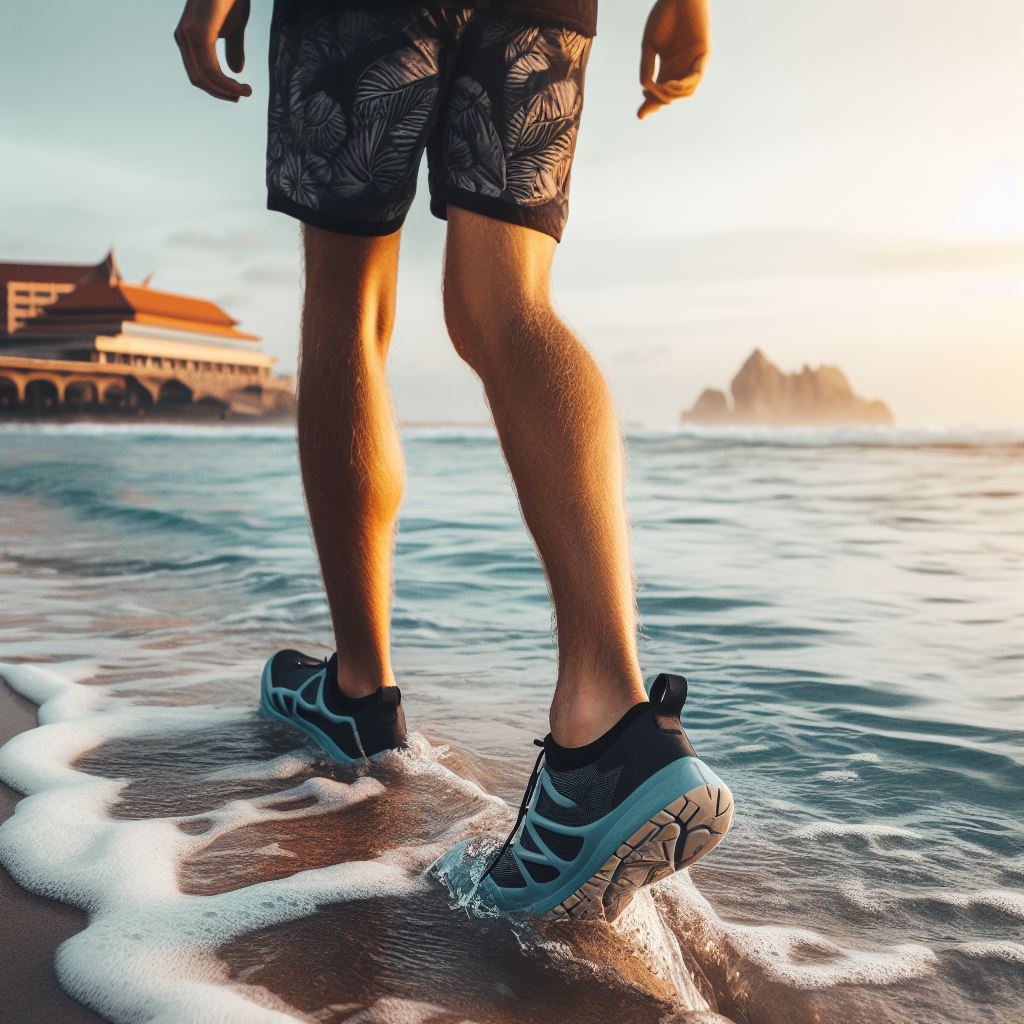
How To Choose The Right Water Shoes For Walking (Can Water Shoes Be Used For Walking)
Choosing the right water shoes for walking involves considering several important factors to ensure a comfortable and safe experience. Here’s a guide on how to select the right pair of water shoes:
1. Fit
Ensure a snug yet comfortable fit. Water shoes should not be too tight, as this can cause discomfort, blisters, or restricted blood circulation.
Consider trying them on with the type of socks you plan to wear, as this can affect the fit.
2. Arch Support
Look for water shoes with adequate arch support. This is crucial for walking comfort, especially during longer walks.
Some water shoes have removable insoles, allowing you to customize the arch support.
3. Sole Type
Consider the type of sole based on your intended use:
For casual walking: Choose water shoes with a lightweight sole, suitable for flat or urban terrain.
For hiking or rugged terrain: Opt for water shoes with thicker and more rugged soles that provide additional traction and protection.
For water sports: Select water shoes with non-marking soles, which are suitable for boat decks and water-based activities.
4. Material
Water shoes are normally made from quick-drying materials such as neoprene, mesh, or synthetic materials. Ensure the material is durable and breathable.
Some models come with drainage holes to help water escape, keeping your feet dry and comfortable.
5. Traction
Choose water shoes with good traction for stability on various surfaces, especially if you plan to walk on slippery terrain.
6. Intended Use
Determine the primary purpose of your water shoes:
Casual walking: Opt for lightweight, comfortable water shoes with moderate arch support.
Hiking or outdoor adventures: Select water shoes with more durable materials, rugged soles, and enhanced support for uneven terrain.
Water sports: Choose water shoes specifically designed for water-based activities, with quick drainage and non-marking soles.
7. Adjustability
Consider water shoes with adjustable straps or laces to ensure a secure and customizable fit. This is important for stability during walks.
8. Brand and Model
Research reputable brands and specific models known for their quality and suitability for walking. User reviews and recommendations can be valuable in your decision-making process.
9. Try Before You Buy
Whenever possible, try on water shoes in-store to ensure they fit comfortably and meet your specific needs. This will help you make an informed choice.
10. Budget
Determine your budget and look for water shoes that provide the best combination of features and quality within your price range.
By carefully considering these factors, you can choose the right water shoes that best match your walking needs, ensuring a comfortable and enjoyable experience whether you’re strolling along the beach, exploring nature, or engaging in water-based activities.
READ ALSO: Are Water Shoes Necessary
Alternative Footwear Options For Walking (Can Water Shoes Be Used For Walking)
If water shoes don’t seem suitable for you or if you have specific walking needs, there are several alternative footwear options to consider:
1. Hiking Shoes/Boots
Hiking shoes or boots are designed for various types of terrain and offer excellent ankle support. They are ideal for longer hikes, challenging trails, and uneven terrain. They come with sturdy outsoles and advanced arch support for extended walking comfort.
2. Trail Running Shoes
Trail running shoes are a versatile option for walking and light hiking. They are lightweight and designed for off-road use, providing good traction and stability. They often offer a balance between comfort and durability.
3. Sports Sandals
Sports sandals are a great choice for warm weather walks and water activities. They offer good support, breathability, and quick-drying capabilities. Some models come with adjustable straps for a secure fit.
4. Walking Shoes
Dedicated walking shoes are designed with comfort and support in mind. They typically have cushioned insoles, arch support, and reliable traction for various walking conditions. They are suitable for both short and long-distance walks.
5. Running Shoes
While running shoes are primarily designed for running, they can also be used for walking, especially if you’re looking for maximum cushioning and shock absorption. They provide excellent comfort but may not have the same level of durability as hiking shoes.
6. Casual Sneakers
Casual sneakers are a versatile choice for everyday walking. They are comfortable, lightweight, and come in a variety of styles. While they may lack some of the specialized features of other options, they are suitable for casual walks in urban environments.
7. Orthopedic Shoes
For individuals with specific foot conditions or orthopedic needs, orthopedic shoes offer customized support and comfort. They are designed to alleviate foot problems and provide relief during walking.
When choosing an alternative to water shoes for walking, consider your specific needs, the type of terrain you’ll be walking on, and the duration of your walks. Each of these footwear options has its own advantages and is best suited for particular situations.
You May Like: Are Water Shoes Machine Washable: Discover The Ultimate Secret
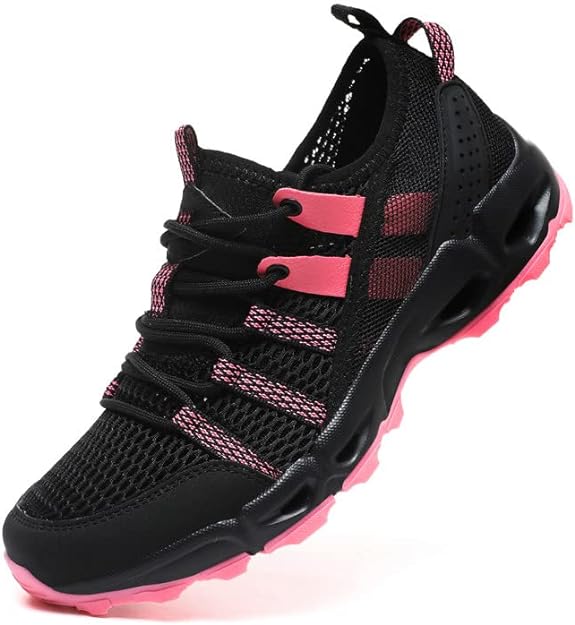
Safety Tips For Walking With Water Shoes (Can Water Shoes Be Used For Walking)
Here are some safety tips for walking with water shoes to ensure a comfortable and risk-free experience:
1. Mind Slippery Surfaces
Water shoes, while designed for traction, may not always provide the same level of grip as hiking or specialized walking shoes. Exercise caution when walking on slippery surfaces, such as wet rocks, moss-covered paths, or muddy trails. Take shorter steps and maintain balance to reduce the risk of slipping.
2. Know Your Limitations
Understand that water shoes are most suitable for short-distance walking and leisurely strolls. Avoid using them for extensive hikes or activities that demand heavy support and protection. In such cases, opt for hiking boots or trail shoes designed for the specific terrain and demands.
3. Check For Debris
After walking in water or sandy environments, it’s essential to check your shoes for debris like small stones, shells, or sand. These can cause discomfort and affect your walking experience.
4. Protect Your Feet
While water shoes are designed to be lightweight and breathable, they may not provide the same level of protection against sharp objects as hiking boots or trail shoes. Be vigilant when walking in areas with potential hazards like glass, thorns, or sharp rocks.
5. Stay Hydrated
When walking in hot weather, especially with water shoes that allow water to escape easily, stay well-hydrated. Dehydration can lead to fatigue and discomfort, so bring an adequate supply of water.
6. Sun Protection
If you plan to walk in sunny conditions, consider applying sunscreen to your exposed skin and wearing a hat or sunglasses to protect yourself from UV rays. Some water shoes may offer limited sun protection, so additional measures may be necessary.
7. Choose the Right Pair
Ensure that the water shoes you choose fit well and provide the support you need for your specific walk. Ill-fitting shoes can lead to discomfort and blisters.
8. Plan Ahead
Before heading out for a walk, check the weather and trail conditions. This will help you prepare appropriately and ensure a safe and enjoyable experience.
9. Emergency Equipment
If you’re venturing into more remote areas, it’s a good idea to carry essential safety equipment, such as a first-aid kit, a whistle, and a map or GPS device.
By keeping these safety tips in mind and being aware of the limitations of water shoes, you can make the most of your walking experience while ensuring your safety and comfort.
RELATED: What Are Water Shoes Used For
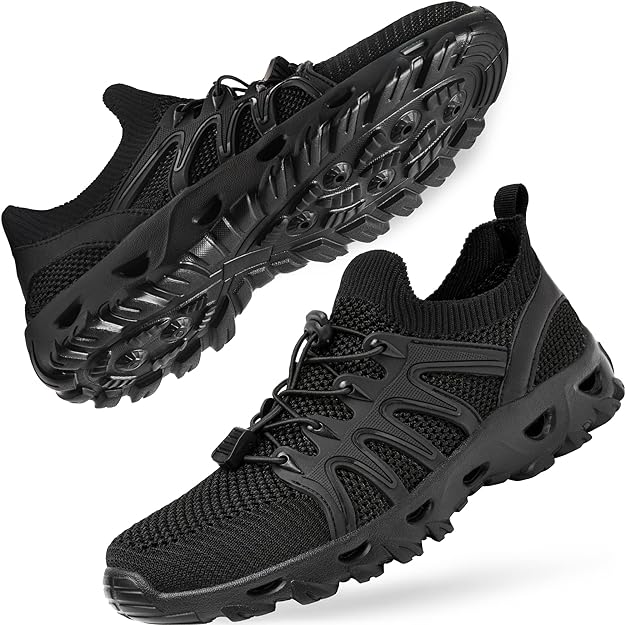
Proper Maintenance And Care Of Your Water Shoes (Can Water Shoes Be Used For Walking)
proper maintenance and care of your water shoes are essential to extend their lifespan and keep them comfortable. Here are some tips on how to care for and clean your water shoes:
Cleaning
Rinse After Use: After each use, especially in saltwater or muddy conditions, rinse your water shoes thoroughly with fresh water. This helps remove sand, salt, and debris that can cause wear and tear.
Hand Wash: Use a mild detergent and lukewarm water to hand wash your water shoes. Gently scrub with a soft brush or cloth to eliminate any stubborn stains or dirt. Avoid using tough chemicals, as they can damage the materials.
Remove Insoles: If the water shoes have insoles that can be removed, take them out before cleaning. This allows you to clean them separately and ensures thorough cleaning and drying.
Drying
Air Dry: Let your water shoes to air dry naturally. Avoid using direct heat sources like radiators or sunlight, as they can cause materials to deteriorate. Instead, place them in a well-ventilated area.
Remove Odors: To prevent odors, sprinkle baking soda or a specialized shoe deodorizer inside your water shoes after they are completely dry. This helps absorb moisture and neutralize odors.
Storage
Store Them Properly: When not in use, keep your water shoes in a cool, dry place away from direct sunlight. Avoid leaving them in a hot car, as extreme heat can affect their materials.
General Care
Regularly Inspect: Periodically check your water shoes for signs of wear, such as loose stitching, damaged soles, or holes. Address any issues promptly to prevent further damage.
Rotate Usage: If you use water shoes regularly, consider rotating between multiple pairs. This lets each pair fully dry and recover between uses, prolonging their lifespan.
Follow Manufacturer Maintenance Guidelines: Always follow the care and maintenance guidelines provided by the manufacturer for your specific water shoes. Different brands and models may have unique care instructions.
The Bottom Line On Can Water Shoes Be Used For Walking
The answer to the question, “can water shoes be used for walking,” is a resounding “yes.” These adaptable shoes offer both comfort and versatility, making them an excellent choice for short-distance walks and casual strolls.
With the right pair of water shoes, you can stride confidently and comfortably on various terrains, from sandy shores to rocky trails. So, why wait? Lace up your water shoes and embark on your next walking adventure today!










